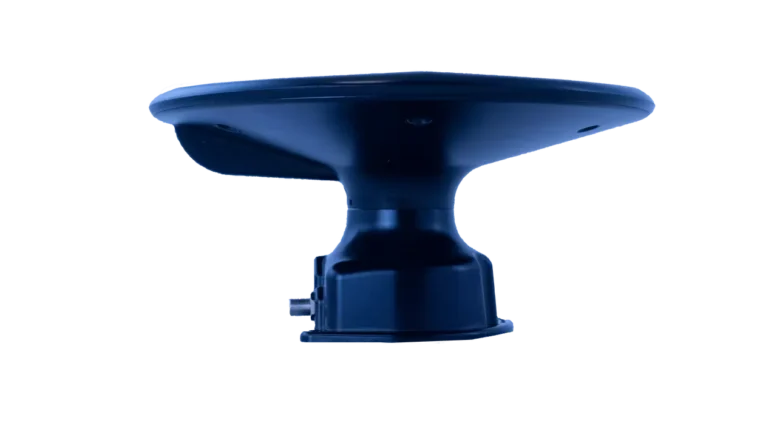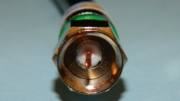What you see above you is KING’s Omni Home Go antenna. It’s the smallest omni antenna I’ve ever seen. It’s small enough that you can put it on a shelf and barely notice it. At ten inches in diameter. it’s compact to say the least. But will it work?
First, let’s talk about omni antennas
Omnidirectional antennas are designed to do exactly what they say. They pick up signal from all directions. Depending on the kind of signals they pick up, they do this one of two ways. The simplest omni antenna is just a loop of wire laid flat. That’s going to pick up something from every direction, but it’s not going to be particularly effective for longer waves like VHF. In order to get VHF signals from every direction, omni antennas do a little slight of hand.
Typically, omni antennas will use between 4 and 8 regular VHF antennas, each with enough beam width so that the entire area around the antenna is covered. Often, these antennas will all be on the same circuit board to minimize the loss from combining them. However, these antennas are going to be less effective anyway because of their small size. In an antenna like the Omni Go, I’d guess they’re small indeed.
The design of omnidirectional antennas makes them less effective, but a lot more convenient. If you’re fairly close to a major city, an omni antenna is going to be a great bet for you. It will receive enough signal to do what you need, and you won’t ever have to worry about adjusting it.
But what about this antenna?
It’s worth pointing out that the Omni Go is not advertised as an indoor antenna. It’s marketed as a compact antenna that you can mount on an RV or put on a tripod quickly. If you’re packing it up every night, space is going to be at a premium.
If you were to try to use this antenna indoors, you would automatically be losing 3-5dB of signal due to the construction of the building you’re in. Energy-efficient buildings do a great job of blocking TV signals, unfortunately. It may not make common sense, but often times the windows are more energy efficient than the walls. This means you might get better reception with the antenna behind a wall rather than behind a window. I know, it sounds kind of weird, but that’s the way it is in my home. It’s the way it is in many other homes, too.
But bottom line, this antenna and practically any other antenna is going to work for you if you’re close enough to the towers. My guess is that in most cases you’ll get reliable reception 10-15 miles from the towers no matter what kind of building you’re in. That’s enough for tens of millions of people to enjoy free TV without having to worry about aiming or even a large unsightly antenna.
Get the antenna you need from Solid Signal
Solid Signal has the best selection of antennas you’ll find anywhere. Whether you’re in a midtown apartment or a huge rural farm, you’ll be able to get tons of free television with nothing more to pay after that initial purchase. With the economy cooling, it’s a smart investment. Of course, with so many choices, it’s hard to know what the right one is. That’s where Solid Signal’s experts come in. We’re here to help with great advice from real certified technicians. Call us during East Coast business hours and we’ll recommend the antenna and accessories you’ll need. Call 888-233-7563 and a tech in our Detroit-area office will take great care of you. If it’s after hours, fill out the form below and we’ll call you right back!





